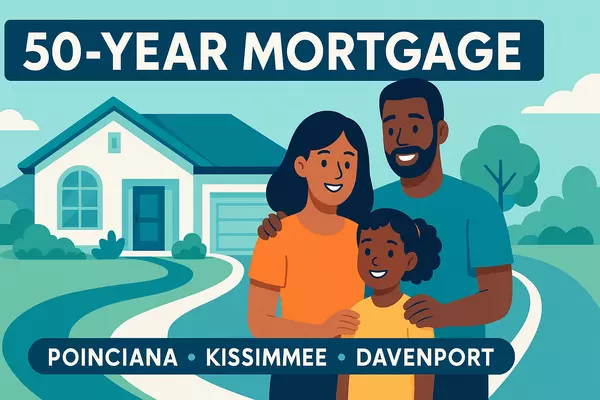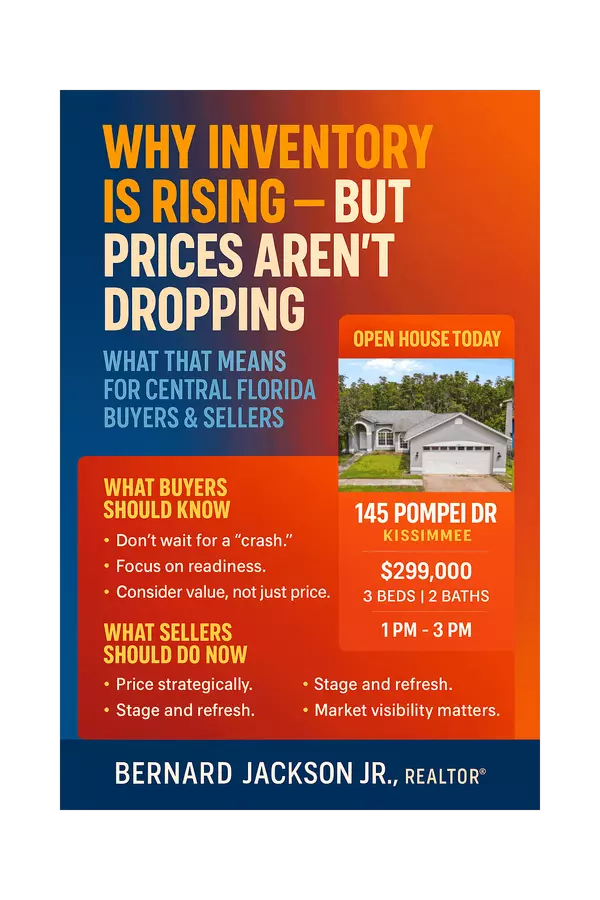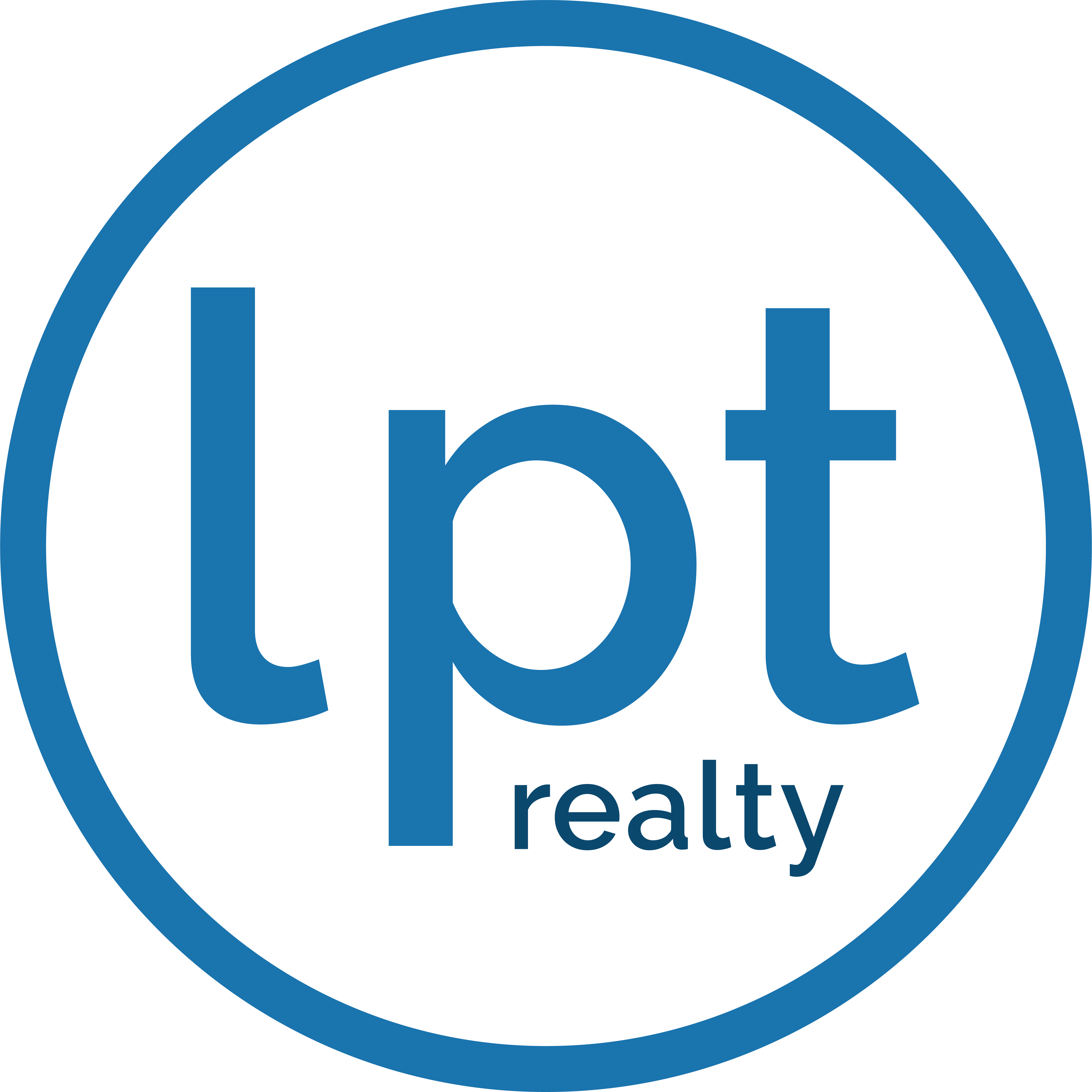After 10 Years In Real Estate, I am Telling You: 'Don't Buy A House - Buy A Plan"
After 10 Years in Real Estate, I Tell Some Clients: “Don’t Buy a Home—Buy a Plan.” Here’s Why.
Cover image: Central Florida first-time buyer comparing FHA vs Conventional for a 2–4 unit house hack.
Snapshot: First-Buy Paths Compared
| Path | Typical Down | Monthly Insurance | Key Win | Good Fit |
|---|---|---|---|---|
| FHA Single-Family | 3.5% | MIP (often life of loan <10% down) | Easier entry | Lower credit, minimal cash |
| Conventional Single-Family | 3–5%+ | PMI (cancels ~80% LTV) | Lower lifetime cost | Mid-strong credit |
| FHA 2–4 Units | 3.5% | MIP + self-sufficiency test (3–4 units) | Rents offset payment | Entry to multifamily |
| Conventional 2–4 Units | 5% | PMI (cancels) | House-hack sweet spot | Mid-strong credit |
| VA (eligible) | 0% | No monthly MI | 2–4 units allowed (OO) | Service members/vets |
| USDA (eligible areas) | 0% | Guarantee fee (not PMI) | Lower cash to close | Rural/suburban |
Programs change—always verify current rules, MI, income/area limits, and multifamily down payments with your lender before you lock a strategy.
1) Why the “FHA + Single-Family” Default Isn’t Always Your Best First Step
FHA loans are powerful—especially if your credit or savings are still a work in progress. With a 3.5% minimum down payment and flexible underwriting, they help many buyers become owners. The trade-off is mortgage insurance: you’ll pay an up-front premium and annual MIP; if you put less than 10% down, that annual MIP typically lasts for the life of the loan. Over a multi-year hold, that can keep your payment stubbornly high.
Conventional loans, by contrast, may require PMI when you put less than 20% down—yet PMI can be canceled once you reach about 80% LTV (or automatically at 78% if you’re current). This single feature often makes a conventional route cheaper to keep, even if the day-one rate looks similar.
2) Conventional: Bigger Down Payment—but Potentially Lower Monthly & Lifetime Cost
Contrary to myth, conventional isn’t “20% down or bust.” First-time buyers can access 3% down options (Conventional 97, HomeReady, Home Possible), and standard 5% down routes are widely available. Conventional pricing also rewards stronger credit tiers. Crucially, PMI is temporary—once you reach roughly 80% LTV, you can request removal; at about 78% it auto-terminates. That glide path can drop your monthly payment during your hold period.
Seller Concessions That Help
Conventional seller concessions are capped by down-payment tier (3% <10% down; 6% at 10–25%; 9% at >25%). Used smartly, concessions can cover closing costs and even rate buydowns, shrinking your cash-to-close without inflating your long-term payment.
3) The House-Hacker’s Shortcut: Start with a Duplex, Triplex, or Fourplex
Buy a 2–4 unit property, live in one unit, and rent the others. You still qualify for owner-occupied terms, but now rental income can help you qualify and offset your payment. Many lenders consider about 75% of market rent from the other units when qualifying, documented via the appraisal’s rent schedule. FHA requires a self-sufficiency test for 3–4 units (duplexes are exempt), which ensures projected rents cover the total payment on paper.
A big recent shift: owner-occupied conventional financing for 2–4 units is possible with as little as 5% down. That’s a game-changer for first-timers who want multifamily economics without investor-loan pricing.
4) FHA vs Conventional for Multifamily (2–4 Units)
5) Powerful Alternatives Most Buyers Don’t Consider (But Should)
1) VA Loans (Eligible Service Members & Veterans)
0% down, competitive pricing, no monthly mortgage insurance, and up to 4 units if you occupy one. VA loans are also assumable—huge in higher-rate markets.
2) USDA Loans (Rural/Suburban)
0% down in eligible areas for modest-income buyers. Many suburbs qualify; check property eligibility and income limits.
3) Down Payment Assistance (DPA) & Affordable Seconds
Florida’s Hometown Heroes can offer substantial assistance as a deferred, low- or no-interest second to reduce cash-to-close. Pair with seller credits to optimize cash and payment.
4) Renovation Financing (FHA 203(k) & HomeStyle®)
Buy + rehab in one loan. Strategic improvements can add equity and lift rents on day one—especially compelling on small multifamily.
5) Temporary Rate Buydowns (2-1, 3-2-1)
Ask sellers/builders to fund a temporary buydown to reduce your payment for the first 1–3 years while you stabilize income and rents.
6) Non-Occupant Co-Borrowers
Some programs allow a parent/relative to co-sign without living there—boosting qualifying strength for first-timers.
7) ADU Income on Single-Family
If multifamily isn’t available, a home with a legal ADU can mimic the economics: separate unit, separate rent stream, improved qualifying in certain programs.
6) Assumable Mortgages: The Low-Rate Shortcut Few Buyers Use
FHA and VA mortgages are generally assumable with servicer approval and buyer qualification. If a seller locked a sub-4% rate, you may assume the rate and remaining balance. You’ll need to cover the seller’s equity (cash or secondary financing), but the monthly savings can be dramatic versus taking a brand-new loan at market rates.
7) Seller Concessions & Strategy—Don’t Leave Money on the Table
FHA allows up to 6% seller contributions; conventional varies by down payment (3% / 6% / 9%). Use credits for closing costs or to fund a temporary or permanent rate buydown. In the right negotiation, this can meaningfully lower both cash-to-close and payment.
8) So… Should You Still Buy a Single-Family as Your First Home?
Sometimes, yes. If your life stage or stability demands it—and the numbers work—it can be the right call. But don’t default to it just because your cousin did. Compare the total monthly and lifetime cost (including when insurance ends), check multifamily/ADU options, screen for DPA, and ask about assumables. Pick the path that buys back your time, lowers risk, and multiplies options.
9) A Clear Blueprint You Can Use This Month
- Get dual pre-approvals (FHA & Conventional): Compare all-in monthly costs—including MI timelines and potential seller credits.
- Add a multifamily filter: Include 2–4 units; pre-underwrite with ~75% of appraiser market rents so offers are confident.
- Layer assistance: Screen for Florida Hometown Heroes, then negotiate seller concessions for closing costs or a buydown.
- Hunt for assumables: Target FHA/VA listings and confirm the servicer’s assumption process early.
- Use renovation financing if needed: FHA 203(k) or HomeStyle® to add value and lift rents from day one.
- Select the lowest total-cost path for your 5–7 year plan, not just the lowest day-one payment.
Central Florida Focus (GEO)
Service Areas: Poinciana (34758, 34759), Kissimmee (34741, 34744, 34746), Davenport (33837, 33896), Haines City (33844), Winter Haven (33880), plus surrounding Osceola & Polk County communities.
Related pages: First-Time Buyer Hub · New Construction Spotlight · Rentals to Buyer Path
Frequently Asked Questions
Is FHA always cheaper than Conventional?
Not necessarily. FHA can start cheaper, but Conventional’s cancelable PMI often lowers your total monthly over a 5–7 year hold.
Can first-time buyers purchase a fourplex?
Yes—up to 4 units is still residential if you occupy one unit. Underwriting rules vary by program.
What down payment do I need for 2–4 units?
FHA from 3.5%; Conventional from 5% (owner-occupied); VA 0% for eligible buyers.
How is PMI different from FHA MIP?
PMI on Conventional loans can be removed around 80% LTV; FHA MIP typically remains for the loan term with <10% down.
Are assumable FHA/VA loans worth pursuing?
Yes—assuming a low-rate FHA/VA note can materially reduce your monthly payment if you can cover seller equity.
Can ADU rental income help me qualify?
Some programs allow ADU income; requirements vary by lender and program.
Can I combine down payment assistance with seller concessions?
Often, yes. DPA can reduce cash-to-close while concessions fund buydowns or remaining fees.
About Bernard Jackson Jr.
Bernard Jackson Jr. is a bilingual REALTOR® with LPT Realty serving Central Florida—Poinciana, Kissimmee, Davenport, Haines City, and Winter Haven. Licensed since 2015, Bernard specializes in helping first-time buyers, renters transitioning to homeowners, and investors navigate financing strategies from FHA and Conventional to VA, DPA, small multifamily, and assumables. He’s known for a client-first, culturally empathetic approach and end-to-end guidance. Call/text (321) 443-5582 or email bernardjacksonrealtor@gmail.com.
Disclaimer: Programs, limits, MI rules, and underwriting standards change. Examples are illustrative only—confirm specifics with a licensed lender for your credit, income, and property profile. This content is educational, not legal, financial, or tax advice.
Categories
- All Blogs (196)
- #FearlessFriday (10)
- #MotivationalMonday (14)
- #solutionsaturday (6)
- #SoulfulSunday (7)
- #TechnologyThursday (10)
- #WellnessWednesday (14)
- 10 Steps To Know About Buying A Home In Poinciana (1)
- 10 Things To Know About Davenport (1)
- 10 Things To Know About Poinciana (1)
- 5 New Things For Poinciana For 2025 (1)
- Annual Events and Festivals in Kissimmee, Fl (2)
- Benefits of Living in Poinciana (1)
- Benefits of Selling to a Cash Buyer (1)
- Buyers (75)
- City Guides Kissimmee (14)
- CITY GUIDES: Poinciana Real Estate News & Resources (3)
- CITY STATISTICS: Davenport Real Estate News & Resources (1)
- City Statistics: Kissimmee (2)
- CITY STATISTICS: Lake Wales Real Estate News & Resources (1)
- Kissimmee Homes For Rent (4)
- Kissimmee Homes For Sale (9)
- Pros and Cons of Living in Kissimmee, FL (1)
- Renters (37)
- Retirement In Poinciana, FL (1)
- Sellers (16)
- Things To Do In Poinciana (2)
- Things To Do Near Kissimmee, FL (2)
- Things To Do NYE 2025 In Orlando and Kissimmee, FL (1)
- Truth About 20 Percent Down (1)
- What Are The Benefits of Living In Kissimmee (1)
- Your Dream House (1)
Recent Posts










GET MORE INFORMATION

